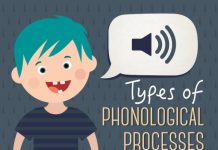A lisp is the most common speech impediment seen in children as well as adults. It is basically the inability to pronounce certain sounds, particularly the letters ‘s’ and ‘z’. There are also other types of lisps and all of them result in the child’s speech being unclear.
Reasons for lisping
Young children often lisp when they are learning how to speak. This lisp can resolve over time on its own when the child learns to pronounce words and sounds correctly. In cases this natural resolution may take longer if the child’s lisp is frequently referred to as ‘cute’ or ‘endearing’ by others around.
In some cases, parents ‘baby talking’ in a deliberate lisp could also slow down the process of the child overcoming the lisp.
However, a lisp that is an actual speech impediment in children could have several reasons; some of them physiological.
Conditions such as a deformity of the palate or teeth structure, large size of tongue and so on could cause a lisp. Swollen adenoids also often cause lisps, as do kids who have a cold or a blocked nose.
Having an under-bite could also cause a person to have a lisp. If the tongue has been bruised or swollen for any reason, this could also result in a lisp.
The affected or deliberate lisp
Unlike other speech impediments, a lisp may sometimes be affected. Certain groups are known to speak in a certain lisping manner that deliberately mispronounces certain sounds and words. This may be a clique thing rather than a speech impediment.
This may be something that a parent may well find irritating especially in an older child, but it may not be any cause for worry or any kind of treatment. When the child stops hanging with his or her current crown they may well outgrow their lisp when he or she no longer perceives that speech pattern as ‘cool’.
Treatments for a lisp
However a genuine lisp may require treatment. Treating the underlying disorder or structural abnormality will effectively resolve the problem of lisping. Or the child may require speech therapy that will use various drills and exercises to help the child pronounce sounds properly.
A speech-language pathologist would typically start the child off on exercises involving S-words to help the child pronounce them properly. Starting with simple words, the therapy will increase in complexity and speed and include longer phrases and sentences.
Certain specially designed devices that are inserted into the mouth can also help to resolve a lisp.














